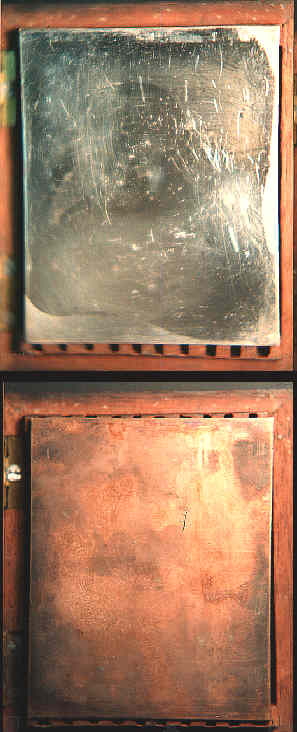
Ninth-plate
daguerreotype Plate "A"
(Writer's collection.)
|
WRITTEN ON BACK: Nothing .
POSSIBLE LENS: Five inches diameter and seven inches focal length. A lens of this
aperture and focal length would have maximized light falling upon the daguerreian plate. It would
however, have been impossible to achieve any degree of sharpness in the image (in other words
there would have been no depth of field) owing to the degree of spherical aberration in a lens with
such a ratio of diameter to focal length (f stop would have been only about 1.4).
DRAPER QUOTATIONS: (highlights are mine)
lens five inches in diameter and seven inches focus . . . dark parts of the clothing impressed
themselves . . . the forehead and cheeks and chin on which the light fell most favorably, would
come out first.[109]
The first daguerreotype portrait consisted of white spots corresponding to the forehead, the
cheeks and the chin of the sitter.[110]
By increasing the illumination and prolonging the time I could get the whole countenance. But as
you will gather from the size of the lens I used, though it was a combination of a pair of convexes,
nothing like a good picture was possible.[111]
|